AARP Eight Domains of Livability
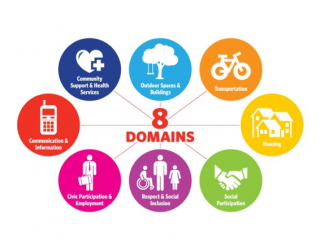
AARP’s Eight Domains of Liability Include:
1. Outdoor Spaces and Buildings
People need public places to gather — indoors and out. Green spaces, seating, and accessible buildings (elevators, zero-step entrances, and ramps) can be used and enjoyed by people of all ages and abilities. Age-friendly communities might require buildings to follow Universal Design Guidelines, a relatively new concept meaning building for people of all abilities including wheelchair users.
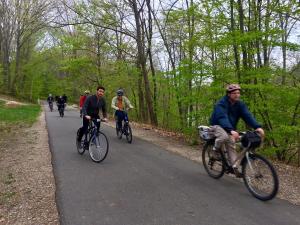
2. Transportation
Transportation systems in an age-friendly community address issues such as accessibility, safety, and awareness. For example, people of all ages and abilities want to walk, ride a bike or a scooter, board a bus, or drive a car safely and with confidence. Each mode requires infrastructure, lighting, signage, and a system that educates the user, ensures their safety, and motivates them to use the system. Pedestrians need safe sidewalks and crossable streets, bicyclists prefer dedicated bicycle lanes or wide shoulders that are marked, and senior drivers need lane markings, lighting, and signage so that they understand where they should be driving. As most New Hampshire residents are reliant on cars, retiring from driving is one of the most difficult milestones in a senior’s life. Age-friendly communities encourage transit use and coordinate transit outreach opportunities to help seniors become familiar and comfortable with these services.
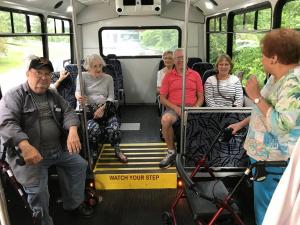 | 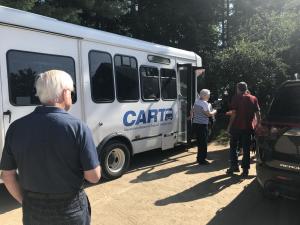 | 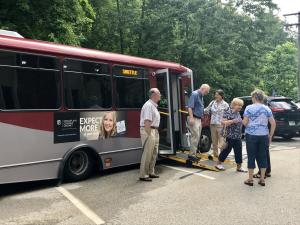 |
3. Housing
Most older adults want to reside in their current home or community for as long as possible. Age-friendly communities accomplish this through various means: promotion of universal design principles, assisting seniors with home modification so that they can age-in-place, and allowing development of housing options that are suitable for differing life stages and incomes. Stories about not finding affordable housing in communities across New Hampshire are common, especially for seniors wanting to downsize or for their adult children wanting to buy their first home. Each community can make the choice to lay the foundation for age-friendly housing through zoning allowances and promoting home services that assist seniors with ageing in place.
4. Social Participation
Parks and Recreation Departments as well as local libraries are often the champions of social participation, recreation, and engagement for every community. These two agencies provide multi-generational programs as well as programs geared for specific ages. Their programs are critical for those who may feel the debilitating effects of isolation. Loneliness can be combated by creating opportunities to socialize and the availability of accessible, affordable, and fun social activities.
5. Respect and Social Inclusion
Everyone wants to feel valued. Intergenerational gatherings and activities are a great way for young and older people to learn from one another, honor what each has to offer and, at the same time, feel good about themselves. Age-Friendly communities encourage partnerships between businesses, agencies, clubs, institutions, and other local stakeholders who together provide opportunities for residents of all ages to interact and learn from each other.
6. Work and Civic Engagement
Volunteer fairs and senior career days are popping up across New Hampshire. An age-friendly community encourages older people to be actively engaged in community life and has opportunities for residents to work for pay or volunteer their skills. Land use boards, historic societies, libraries and other local agencies often are represented by older adults who provide years of experience and hours of volunteer service.
7. Communication and Information
Email, word-of-mouth, newsletters, web site, and social media are some of the more popular methods for seniors to get information. Age-friendly communities recognize that information needs to be shared through a variety of methods and understands that not everyone is tech-savvy.

8. Community and Health Services
At some point, every person regardless of age needs assistance and/or medical services, due to physical or mental limitations, injury, illness, or other factors. Health issues and assistance needs seems to grow as our calendar years increase. Age-friendly communities, provide assistance and care through a variety of services including phone call checks-ins for home-bound residents, yard and home maintenance assistance through volunteer programs, and home care options for seniors who need some extra attention for basic needs. These are the types of essential programs that allow seniors to age-in-place.

